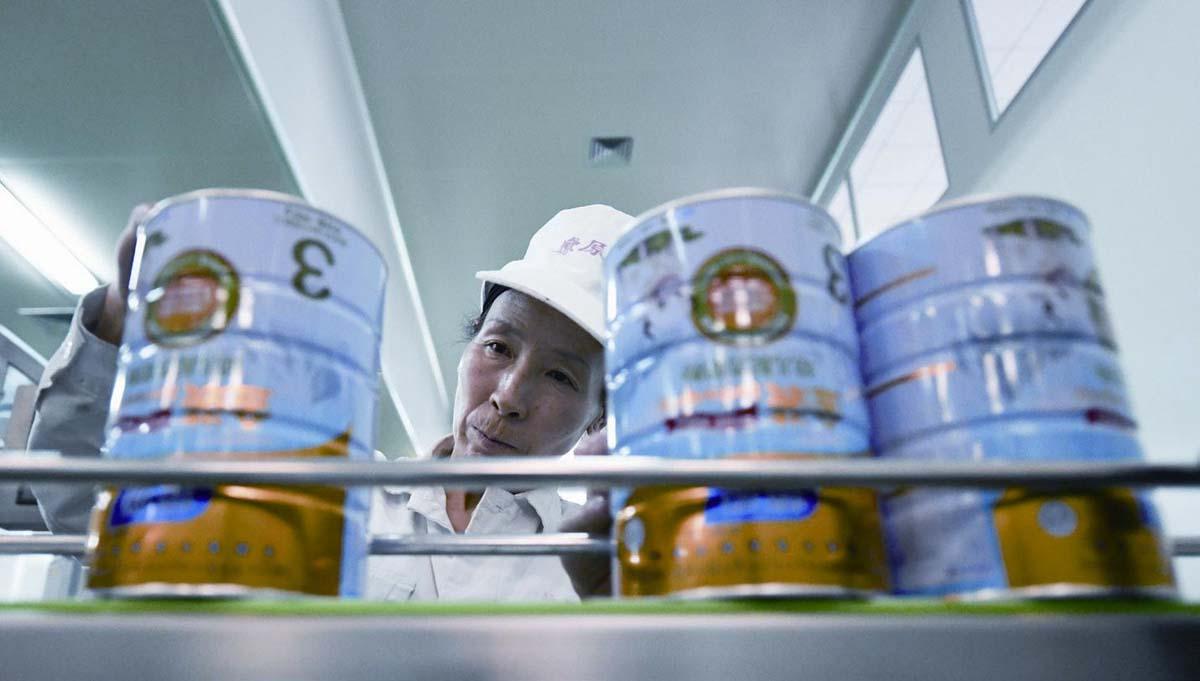Finding a New Formula
By Wang Jun

Bao Yating, founder of a website focused on the maternal and infant industry Muyingqianyan.com, has closely tracked the development of Chinas infant formula market. Her newest findings disappointed the participants in the China Maternal and Infant Frontiers Conference in Shanghai on July 23. Sales of infant formula products in 70 percent of the mother-and-baby stores throughout China are declining, affecting the general performance of the businesses since these products are a major source of profi t, she said.
“The infant formula market is slowing down, and the downtrend is very likely to accelerate in the next few years,” said Li Guoyong, President of Jiangxi New Born Nutritional Technology Co. Ltd., at the conference, adding that the decline in the birth rate is one of the major reasons behind lower market demand. He also noted that as leading domestic brands like Feihe and Junlebao are intensifying marketing efforts and investing more resources in expanding the customer base by attracting new users, the market for small and medium-sized companies like his is shrinking rapidly.
The downturn has been confi rmed by the fi nancial reports of some dairy producers. For instance, due to the price hike of lactotransferrin, a major iron-binding and multifunctional protein, and losses caused by the worsening trade friction between China and the U.S., Shenzhenlisted Beingmate Baby and Child Food Co. Ltd., one of the largest infant formula makers in China, estimated that it would lose anywhere between 110 million yuan ($15.78 million) and 150 million yuan ($21.52 million) in the fi rst half of 2019.
Waning industry
According to figures from the National Bureau of Statistics, the birth rate in 2018 was 10.94 per 1,000 people on the Chinese mainland, with a total of 15.23 million births, a decline of 2 million compared to 2017.
Liang Zhonghua, an analyst with Huatai Securities Co. Ltd. in Nanjing, east Chinas Jiangsu Province, estimated in a report that the number of new babies in the country will further decrease to 14 million in 2019 and may slide to below 13 million within fi ve years.
Along with the birth rate, the total fertility rate is also a factor, said He Fan, chief economist with Entropy Asset Management Co. Ltd., at the 2019 China Children-Baby-Maternity Industry Summit in Shanghai on July 24.
“The winter for the industry has come, and it will continue into 2020 and 2021,” said Bao Xiufei, General Manager of Beingmate, in an interview with China Business Network, a Shanghai-based fi nancial media company. He predicted that the total market volume of infant formula products will not recover to previous levels.
In 2018, 41 percent of infant formula agents in China reported flat or declining sales, and 59 percent of the retailers did not consider introducing new brands in their shops, according to a report on Chinas children-baby-maternity industry released during the summit.
Higher concentration
Yao agreed that small and medium-sized domestic infant formula makers are under great pressure, as foreign brands seek to expand market shares in small and mediumsized cities and large domestic companies intensify marketing campaigns. “If a brand cannot realize annual sales volume of 100 million yuan ($14.35 million) within two years, it will very likely disappear from the market,” he said.
Nie Wenjing, General Manager of Shanghai Howell Nutrition Dairy Co. Ltd., said in recent years, as the birth rate has dropped and the breastfeeding rate increased, the market for infant formula products has become smaller. However, the fundamental reason for the decline is that the increasing industrial concentration has intensifi ed market competition, making the situation more diffi cult for less competitive producers.
“In recent years, many small and medium-sized brands, and even some large ones, have been trying to expand production instead of pursuing higher profits because if they dont, they may be driven out of the market in the future since industrial concentration will only increase,” Nie told The Beijing News.
Song Liang, an independent analyst of the dairy industry, pointed out that with greater concentration in the industry, large and high-end brands are obtaining larger market shares, while small and mediumsized ones face more diffi culties in retaining customers, particularly those that lack core competitiveness, do not have adequate funds for brand and channel establishment, or concentrate heavily on middle- and lowend regional markets.
With greater concentration in the industry, large and high-end brands are obtaining larger market shares, while small and medium-sized ones face more difficulties in retaining customers, particularly those that lack core competitiveness, do not have adequate funds for brand and channel establishment, or concentrate heavily on middle- and low-end regional markets


